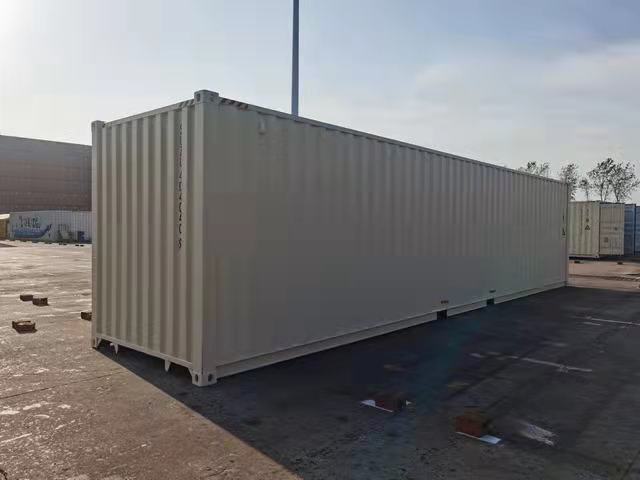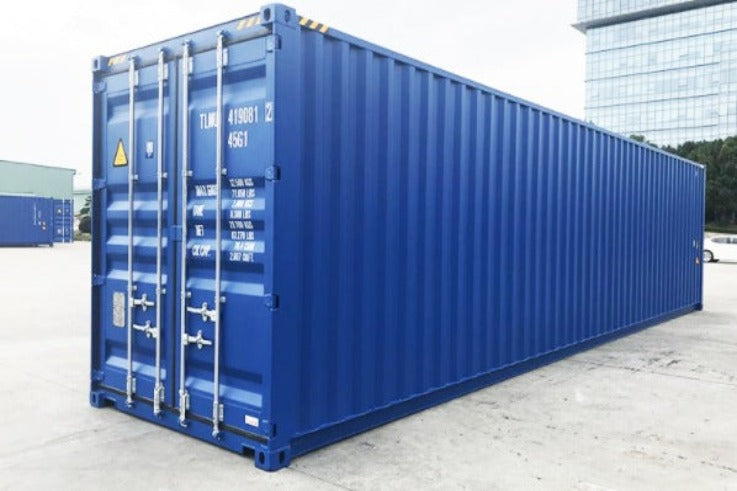How to Maximize Versatility with a New Shipping Container 40 x 8 x 9.6 in Your Next Project
How to Maximize Versatility with a New Shipping Container 40 x 8 x 9.6 in Your Next Project
Blog Article
The Ultimate Guide to Selecting the Right Shipping Container for Your Demands
When it concerns choosing the right shipping container, comprehending your certain requirements is crucial. You'll intend to think about aspects like dimension, type, and product to ensure you make the very best selection. From typical dimensions to specialized options, there's a whole lot to check out. Plus, budgeting for both the container and any kind of modifications can make a huge distinction. Allow's break down the vital aspects to help you discover the excellent fit for your demands.
Comprehending Shipping Container Sizes
When you're selecting a shipping container, recognizing the various sizes readily available is essential for making the appropriate decision. Delivering containers generally are available in conventional sizes of 20 and 40 feet, however you'll additionally find other dimensions. Understanding the dimension you require depends on what you intend to shop or transport.If you're moving smaller things, a 20-foot container may be optimal, while bigger deliveries typically require a 40-foot container. Bear in mind that the elevation can likewise differ; high dice containers offer extra upright space, which can be valuable for taller goods - Buy New Shipping Container 40' x 8' x 9’6".Before determining, measure your cargo, and think about exactly how much area you'll need for filling and dumping. Always consider prospective future requirements-- selecting a somewhat larger container may conserve you trouble down the line. Ultimately, choosing the right size will enhance efficiency and assure your things are protected during transit
Sorts Of Shipping Containers Available
There are a number of kinds of delivery containers offered, each made for certain objectives and freight demands. The common dry container is flexible, ideal for general freight. If you're shipping disposable goods, consider a refrigerated container, which keeps a controlled temperature level. For large items, high cube containers provide extra height, accommodating taller loads.If you require to transport hefty equipment or equipment, level shelf containers offer a sturdy base without walls. At the same time, open-top containers permit easy loading of tall freight, with a removable tarpaulin covering for defense. If you're trying to find versatility, take into consideration a retractable container that can be easily saved when not in use.Lastly, specialized containers like tank containers are utilized for fluids, while vented containers are made for bulk freight that needs ventilation. Recognizing your freight kind will certainly help you select the best container to fulfill your shipping requires successfully.
Material Considerations for Resilience
When picking a delivery container, the product plays a crucial role in its longevity. You'll wish to consider the benefits of steel versus light weight aluminum, particularly regarding rust resistance. Recognizing these variables can assist you make a much more enlightened choice for your shipping needs.
Steel vs. Light weight aluminum Containers
Exactly how do you select in between steel and light weight aluminum containers for your delivery needs? Start by considering sturdiness. Steel containers are durable and offer exceptional stamina, making them optimal for heavy loads and rough conditions. They resist damage from influences and are commonly more economical, which can be a major variable for budget-conscious buyers.On the various other hand, aluminum containers are lightweight, which can conserve you on delivery costs. They're easier to steer and are a terrific option if you require to deliver items frequently. Light weight aluminum is generally more pricey and much less robust than steel. Evaluate your details requirements very carefully, including weight, price, and the sort of freight you'll be delivery, to make the best selection for your situation.
Deterioration Resistance Aspects
Choosing the ideal material does not just entail weight and cost; deterioration resistance plays a considerable function in longevity. When choosing a delivery container, think about the setting it'll face. Steel containers, while solid, can rust otherwise effectively treated. Seek alternatives with safety coverings or galvanization to improve their lifespan. Aluminum, on the various other hand, uses natural rust resistance, making it perfect for seaside locations or moist problems. It can be extra expensive. Furthermore, analyze the container's usage-- if it'll be exposed to chemicals or severe weather condition, focus on products that can endure these problems. Spending in a corrosion-resistant container now can save you from costly repair services or substitutes down the line. Pick wisely for lasting benefits.
Adjustments and Customization Options
Shipping containers aren't just for carrying products; they can be transformed to meet your certain requirements with different adjustments and customization options. You can convert a conventional container into a cozy office, a short-term retail shop, and even a personal fitness center. The opportunities are nearly endless.Think regarding including windows, insulation, or air flow to boost convenience. You could additionally think about electrical circuitry, plumbing, and even custom shelving to boost capability. If safety's an issue, enhanced locks can supply peace of mind.For my blog aesthetic allure, you can paint the container or add a special layout to make it stick out. Don't neglect regarding floor covering choices-- whether you want durable plywood or something a lot more sophisticated, it can raise the space.Ultimately, tailoring your delivery container to suit your requirements can enhance functionality and develop an unique setting that shows your design.
Evaluating Your Transport Requirements
When it pertains to utilizing your customized delivery container, understanding your transport needs is crucial. Start by identifying what you'll be delivery-- whether it's heavy tools, retail goods, or personal things. Each kind of cargo has different needs concerning size, weight, and accessibility.Next, consider the distance and setting of transport. Are you shipping locally, across the country, or internationally? This impacts the container's layout and functionality. If you're utilizing vehicles, assure your container fits conventional measurements for very easy loading and unloading.Additionally, think of transportation problems. Will your things need unique defense from weather condition or temperature fluctuations? If so, you may need insulation or ventilation functions in your container.Lastly, analyze how typically you'll be transporting goods. Frequent shipments may require an extra resilient and versatile container to satisfy continuous demands. By addressing these variables, you'll be well-prepared to select the appropriate shipping container for your demands.
Budgeting for Your Delivery Container
Establishing a budget plan for your shipping container is essential for guaranteeing a smooth investing in procedure. Initially, establish just how much you can afford to spend. Bear in mind that prices can vary considerably based upon dimension, problem, and kind. New containers generally cost more, yet made use of ones can use substantial savings.Next, consider any added expenses you may incur, such as transport fees, delivery costs, and adjustments. If you plan to tailor the container, consider those expenses also. Research study different distributors to contrast rates and discover the most effective bargain that meets your needs.Don' t see page neglect to consist of any authorizations or laws that may put on your purchase and use the container. By plainly describing your budget plan, you'll be much better prepared to make educated choices, ensuring you get the best container without damaging the financial institution.
Upkeep and Look After Durability
To assure your shipping container lasts for several years, normal maintenance is key. Beginning by examining the outside for rust, dents, and damage. If you spot any type of concerns, address them right away to stop further deterioration. Clean the container occasionally, both in and out, to eliminate dirt, particles, and wetness that can cause corrosion.Ensure the doors seal appropriately and lubricate the joints to avoid rust and sticking. If you're utilizing the container for storage space, consider including ventilation to decrease moisture and mold and mildew development. For additional defense, apply a rust-inhibiting paint or sealant annually.If your container's located in a severe setting, like coastal areas, you may require to raise upkeep frequency. Watch on the flooring, as well; any kind of signs of wear must be repaired today. With these simple steps, you'll prolong the life of your shipping official website container significantly.
Frequently Asked Inquiries
How Do I Find a Trustworthy Delivery Container Supplier?
To discover a trusted delivery container distributor, beginning by looking into on-line testimonials, requesting for referrals from friends or industry contacts, and comparing prices. Always examine their qualifications and guarantee they provide quality containers that meet your needs.

Can I Rent a Shipping Container As Opposed To Buying?
Yes, you can certainly rent out a delivery container as opposed to buying one. Many suppliers supply rental alternatives, which can save you cash and give versatility if you only need it for a brief period.
What Permits Are Required for Container Positioning?

Are Delivery Containers Weatherproof and Ideal for Outdoor Storage Space?
Yes, shipping containers are generally weatherproof, developed to stand up to extreme conditions. Their durable construction keeps your things secure and dry, making them appropriate for outside storage space. Simply guarantee correct ventilation to avoid wetness buildup inside.
How Do I Deliver a Shipping Container As Soon As Purchased?

Report this page